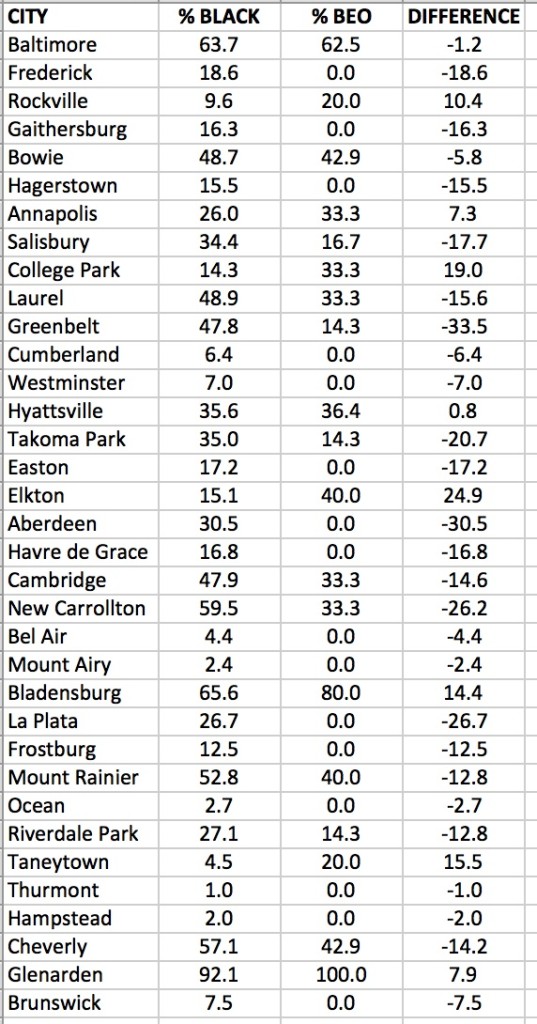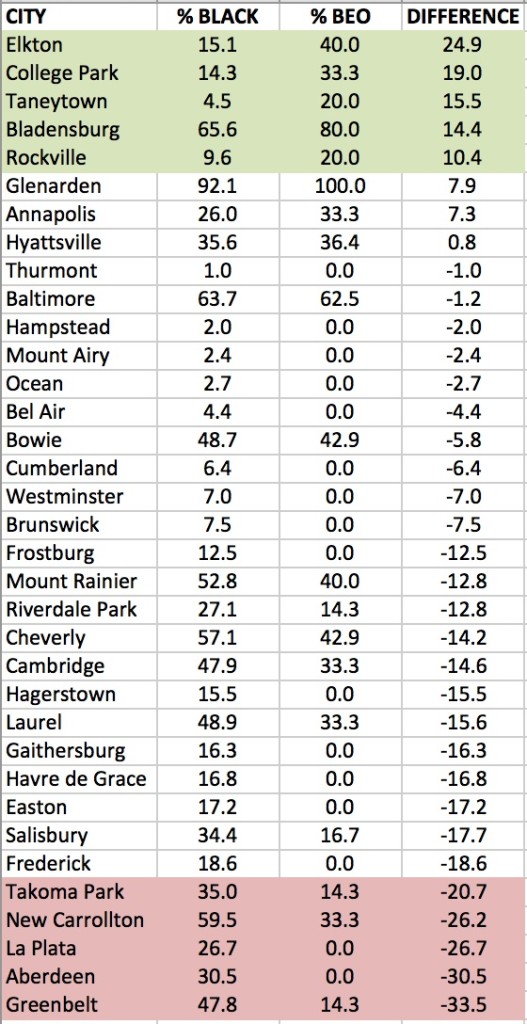Last Thursday, I examined the relationship between the share of African Americans and the share of black elected officials (BEOs) in Maryland’s 35 most populous municipalities. While there is a clear and strong overall relationship, which municipalities have the largest gap between the share of African Americans in the population and on the council?
The table at the top of the post is organized in descending population order; it shows the share of BEOs, including the mayor, in each municipality and compares it to the share of blacks. Baltimore–Maryland’s largest municipality by far and really more comparable to a county–shows an unusually tight link, facilitated in part by the large size of the Baltimore City Council compared to those of Maryland’s other municipalities.
Most Maryland municipalities have councils with just five members, which can explain the gap in many cases. Since councilmembers only come in whole numbers, towns that are 30% black will have a -10% gap if there is only one black councilmember but a +10% gap if there are two black councilmembers.
The following table sorts the 35 municipalities by the difference between the percentage of BEOs and African Americans in the population. Despite the strong overall relationship, the difference within individual cities and towns varies dramatically–from around +25% in Elkton to -33% in Greenbelt.
Elkton, the county seat of Cecil County, tops the chart as two of its four councilmembers are black (the mayor is white) but the town is just 15% black. College Park scores next highest with three black councilmembers out of eight total (the mayor is white), though the city is just 14% black.
Taneytown in Carroll County is less than 5% black but has elected one black councilmember. Blacks in Bladensberg may benefit from their majority status to elect a disproportionate share of councilmembers. Rockville, Maryland’s third largest municipality, has elected one black councilmember, though the city is just 10% African American.
On the bottom is Greenbelt, which is nearly one-half black, but has just one black councilmember out of seven total. Perhaps even more strikingly, two of New Carrollton’s five councilmembers are black (the mayor is white), though the municipality is 60% black. Aberdeen and La Plata–both in counties that have experienced rapid growth over the last few decades–have sizable black populations but no African-American members of their councils.
Famously left-wing Takoma Park has just one recently elected African American on its City Council out of six members (and also has a white mayor). African Americans form 35% of the Takoma Park’s population. So much for stereotypes.
Of course, none of this explains why some towns have a relatively or low or high share of BEOs–a topic perhaps for a future post. And one must also note that black councilmembers are not the same as black representation. People can be well represented by people from a different background. At the same time, one expects to a diverse range of officials in diverse towns.
[Note: Salisbury ranks low in the table but is set to have a second councilmember elected from a black-majority district starting with the 2015 elections, as noted in a previous post.]


